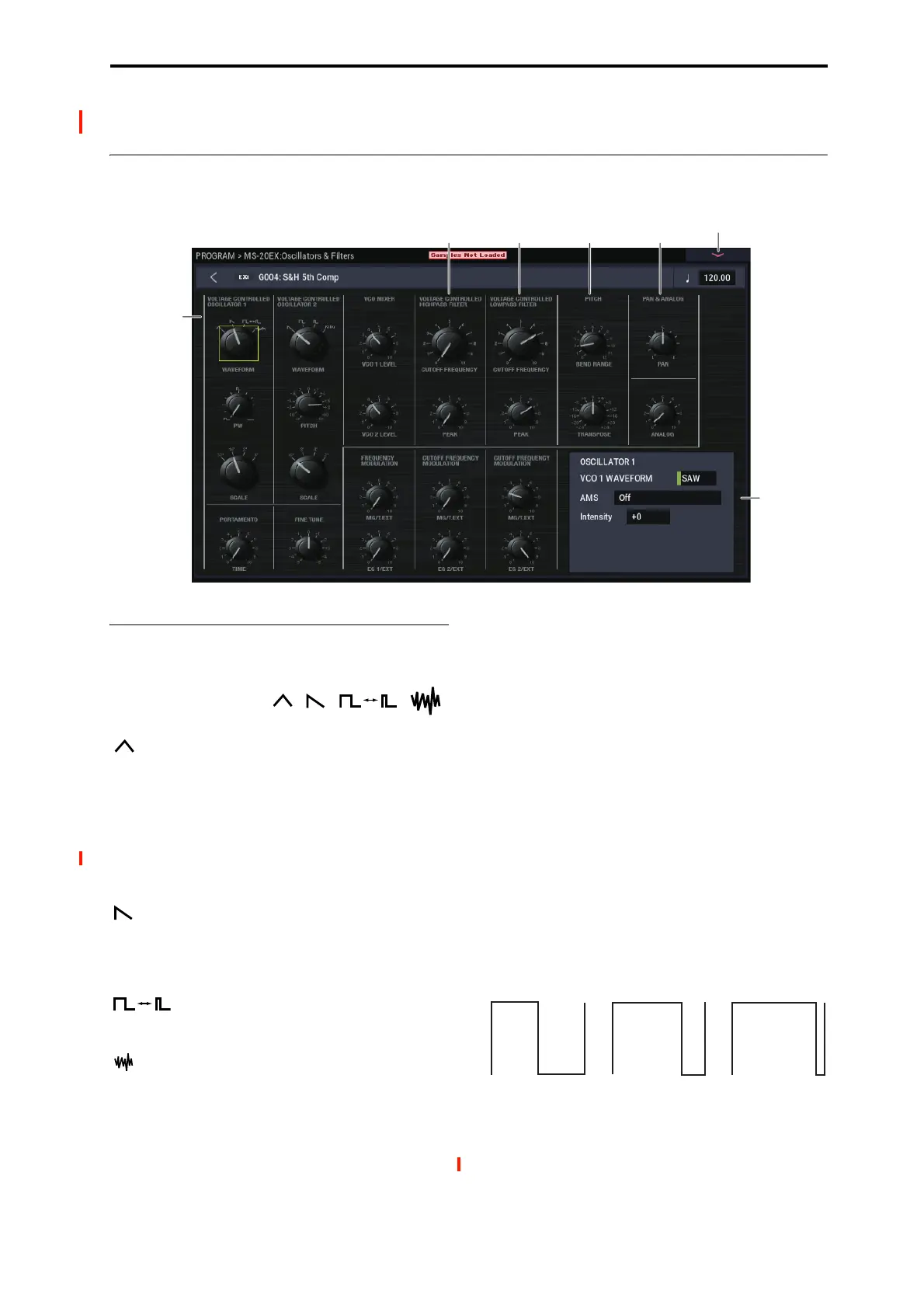PROGRAM > MS-20EX: Oscillators & Filters 4–1: Oscillators & Filters
259
PROGRAM > MS-20EX: Oscillators & Filters
4–1: Oscillators & Filters
4–1a: Oscillators
VOLTAGE CONTROLLED OSCILLATOR 1
WAVEFORM [
, , , ]
This sets the basic timbre of Oscillator 1.
(Triangle Wave): This is a very basic waveform with
few harmonics and a soft, rounded tone color. You can create
a sine wave by processing the Triangle Wave through the
Lowpass Filter. The original MS-20 manual notes that
Triangle waves are “excellent for flute, vibes and other such
effects.”
Note: The Triangle is a little more computationally intensive
than the other waveforms, so using it will result in slightly
lower polyphony.
(Sawtooth): This is the foundation of the traditional,
buzzy analog synth sound. The original MS-20 manual
describes it this way: “A waveform rich in all the harmonics,
and one of the most useful to the synthesist. Used for string,
brass, voice and other harmonically rich sounds.”
(Square/Pulse Wave): This is a variable
waveform shape, whose timbre depends upon the PW
setting, as described below.
(White Noise): This is an un-pitched sound, containing
equal amounts of all frequencies. The original MS-20
manual suggests using this for “wind, surf, gunshot,
percussion, and other such effects.”
PW [0.00…10.00 (50%…0%)]
This adjusts the pulse width when Oscillator 1’s Waveform
is set to Square/Pulse.
0.00 produces a square wave. Increasing the value produces
narrower pulses, until at 10.00 the pulse is so narrow as to be
silent.
The original MS-20 didn’t support pulse-width modulation,
except by sweeping the knob manually. With the MS-20EX,
however, you can modulate PW via AMS. Try using a
medium-speed triangle LFO, or a sweeping EG.
More on Pulse Width
Pulse waveforms are simple, rectangular shapes. The Pulse
Width sets the percentage of the waveform spent in the “up”
position. A few examples are shown in the diagram below.
Note that a square wave is just a pulse wave with PW/PWM
set to 0.00.
The width controls the timbre of the oscillator, from pure
and hollow at 0.00 (a square wave) to thin, reedy, and nasal
at higher settings.
At the maximum setting of 10.00, the Pulse wave will be
silent, since this eliminates the “pulse” altogether.
SCALE [32’, 16’, 8’, 4’]
Adjusts the pitch of Oscillator 1 in steps of an octave. With
each halving of the “feet” value, the pitch goes up one
octave. For example, 4' is one octave higher than 8', and 16'
is one octave lower that 8'.
4–1PMC
4–1b 4–1c 4–1d 4–1e
4–1a
4–1f
Pulse Width = 0.00
Pulse Width = 9.00
Pulse Width = 5.00

